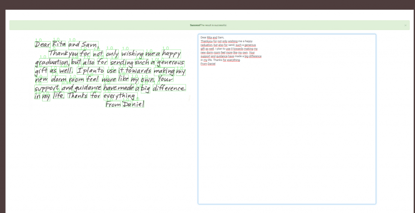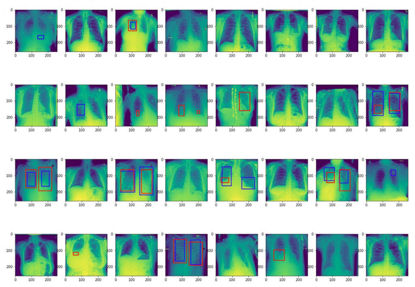Products tagged with 'OpenCV'

AI-OCR – Printed text and Handwriting Recognition
Develop an offline handwriting recognition engine that can automatically read handwritten prescriptions in English from scanned or captured images. The perfect combination of a deep learning neural network and a deep learning neural network will make it possible to process the content of documents with even greater accuracy and clarity. Text can be extracted with high accuracy regardless of the quality of the original document, whether printed text, handwriting, or low-quality images.

Dental Classification
The project aims to develop an engine that can automatically detect & remove rubber stamp from scanned/captured document images.. There are many challenging that we have to cope with in this project. For example, no any standards for rubbers so far (e.g. the variety of rubber shapes, colors) or especially dealing with both scanned and captured images are also a big challenging. After trying several methods and considering between two important metrics (accuracy and performance), we finally deployed YOLOv3 for object detection step and making use of K-means scikit-learn and OpenCV for output generation.

Pneumonia Detection
The project aims to build an algorithm to detect a visual signal for pneumonia in medical images. Specifically, the algorithm needs to automatically locate lung opacities on chest radiographs. The dataset size is set around 23,124 images while the validation size is 2,560 images. To solve the problem, we built our own U-Net with the enhancement of resblock to improve the accuracy of the algorithm. The result based testing dataset (1000 images) is very positive (f2 score ~0.2)

Reading Insurance Card
Reading information from Insurance Cards is a problem of OCR (Optical Character Recognition) for Japanese Words. In order to read the 3 information from Insurance Card, Deep Learning approach is used. In details, we use Tesseract engine to read all information from the card and then employ some combination/ modification features to improve the recognition results. The improvement is basically based on “try and improve” process based on real data that we collected from Internet. • Categorial information (for example, MNIST: 0-9) should follow a categorical distribution: 𝑐1∼𝐶𝑎𝑡 (𝐾=10, 𝑝=0.1) • Shape information (rotation, width) should follow a uniform distribution, for example: 𝑐2, 𝑐3∼𝑈𝑛𝑖𝑓 (−1,1)

Rubber Stamp Removal
The project aims to develop an engine that can automatically detect & remove rubber stamp from scanned/captured document images.. There are many challenging that we have to cope with in this project. For example, no any standards for rubbers so far (e.g. the variety of rubber shapes, colors) or especially dealing with both scanned and captured images are also a big challenging. After trying several methods and considering between two important metrics (accuracy and performance), we finally deployed YOLOv3 for object detection step and making use of K-means scikit-learn and OpenCV for output generation.
 top
top



